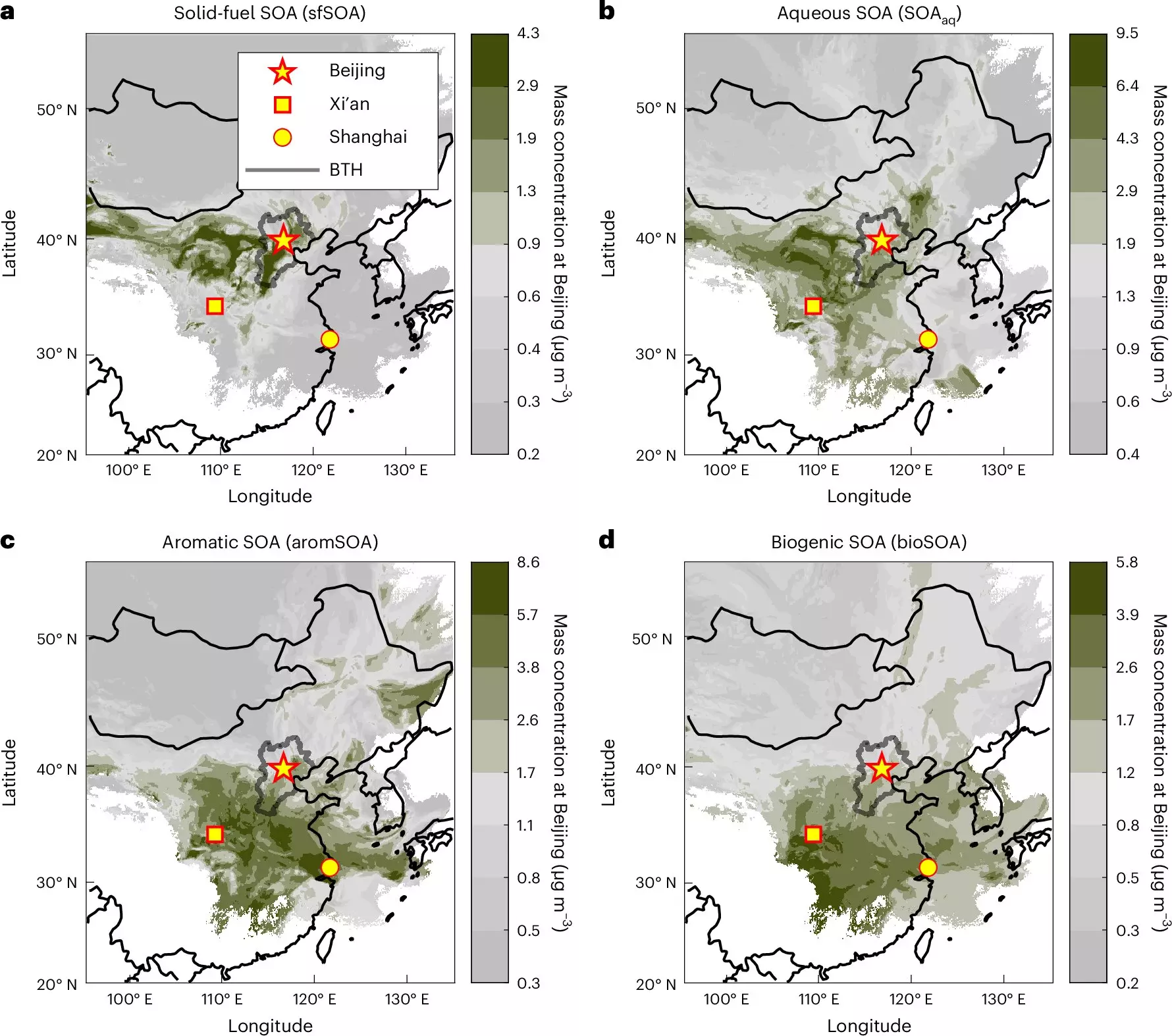Air pollution remains one of the most pressing global health issues, particularly in urban areas where millions are regularly exposed to toxic levels of smog. Recent research led by scientists at the Paul Scherrer Institute (PSI) has made significant strides in comprehending the sources of aerosols contributing to the alarming pollution in Beijing. As much as several million deaths annually are attributed to air pollution worldwide, identifying the origins of these harmful pollutants is vital for crafting effective policies aimed at improving air quality. This article explores the innovative methods used in the study, the complexities of pollution sources, and implications for future air quality management.
A Breakthrough in Aerosol Measurement Technology
Traditionally, understanding air quality has faced significant hurdles due to the complexity and dynamic nature of aerosol composition. The research spearheaded by environmental scientist Kaspar Dällenbach, alongside collaborators from Beijing University of Chemical Technology and the University of Helsinki, introduced a new mobile aerosol mass spectrometer. This novel piece of technology allows for real-time, molecular-level analysis of aerosols in Beijing’s atmosphere. By employing this advanced method, the researchers have unveiled a nuanced perspective on air quality, highlighting the variances in pollution sources across seasons.
Dällenbach’s team conducted their research by monitoring air samples on the roof of the Beijing University of Chemical Technology, focusing on differentiating sources of smog between summer and winter. This unique approach facilitated a detailed understanding of primary and secondary aerosol sources — the former being directly emitted pollutants and the latter forming through atmospheric reactions. This distinction is crucial for identifying targeted mitigation strategies.
Seasonal Variations in Pollution Sources
The findings of the study underscore significant differences in the origins of pollution depending on the time of year. During winter months, the researchers noted that secondary organic aerosols predominantly resulted from the combustion of wood and coal in the broader Beijing-Tianjin-Hebei region. Conversely, summer presented a different picture, with air masses flowing in from the south, leading to pollution largely driven by urban emissions, particularly from the Xi’an-Shanghai-Beijing corridor’s heavy traffic and industrial activities.
This seasonal disparity illustrates how pollution in Beijing cannot be viewed in isolation; it is part of a larger regional atmospheric phenomenon. Understanding these variations is crucial for policymakers seeking to implement effective strategies tailored to specific seasonal challenges.
The health implications of persistent pollutants are profound, especially given Beijing’s dense population. Dällenbach emphasized that studying smog is not just about understanding the science but is intrinsically linked to protecting public health. Millions remain at risk from high pollution levels, which have been notably exacerbated despite reductions in specific emissions, like sulfur dioxide from coal burning. As the aerosol composition evolves due to various chemical reactions, tracing the precise origins of pollutants becomes increasingly difficult, which adds another layer of complexity to air quality management.
The critical takeaway from this research is the recognition that aerosol pollution is not just a localized issue; it has far-reaching consequences and necessitates a collaborative approach across regions. Implementing coordinated measures aimed at improving air quality requires the participation of various stakeholders, including local governments, industries, and affected communities.
Importantly, the methodologies developed during this study are not only applicable to Beijing but also hold potential for understanding air pollution in other urban areas, including those in Europe and in underrepresented regions of the Global South. The findings may pave the way for similar studies, enabling a global approach to tackling aerosol pollution and its associated health risks.
As other cities grapple with their own air quality challenges, the lessons learned from Beijing’s smog debacle can inform and refine strategies to combat pollution. Investing in technology and collaborative initiatives is key to creating effective, sustainable solutions for improving air quality that can transcend geographic and political barriers.
The recent study on aerosols in Beijing, backed by advanced measurement techniques and comprehensive data collection, marks a pivotal moment in the fight against air pollution. By uncovering the intricate web of pollution sources and their seasonal variability, researchers have laid the groundwork for a clearer understanding that can ultimately drive effective interventions. Addressing air quality challenges calls for a united effort that not only targets local emissions but also considers regional atmospheric dynamics. As we strive for cleaner air, the blend of technology, research, and collaboration will be instrumental in mitigating one of humanity’s most pervasive health threats.

